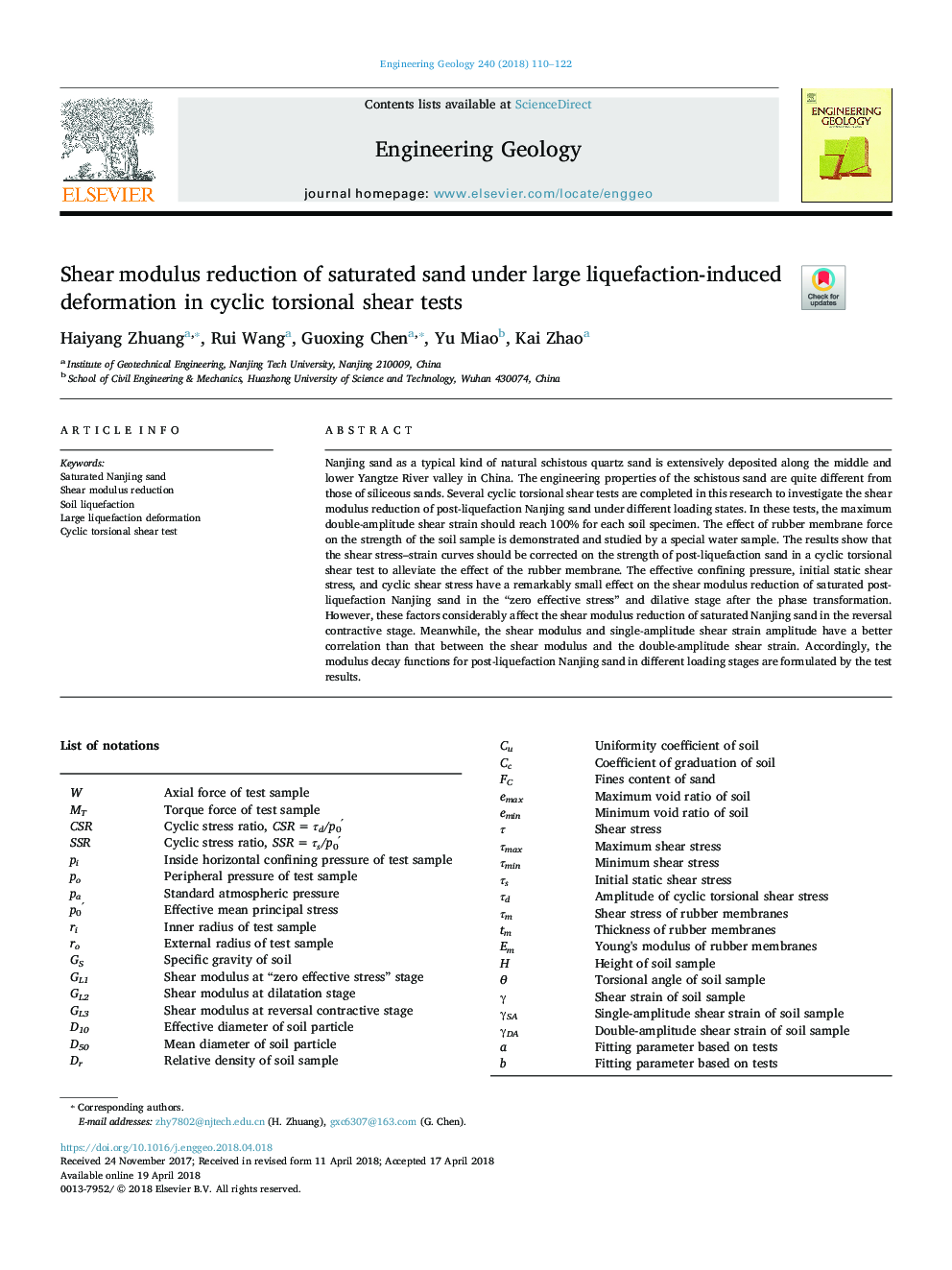| Article ID | Journal | Published Year | Pages | File Type |
|---|---|---|---|---|
| 8915858 | Engineering Geology | 2018 | 13 Pages |
Abstract
Nanjing sand as a typical kind of natural schistous quartz sand is extensively deposited along the middle and lower Yangtze River valley in China. The engineering properties of the schistous sand are quite different from those of siliceous sands. Several cyclic torsional shear tests are completed in this research to investigate the shear modulus reduction of post-liquefaction Nanjing sand under different loading states. In these tests, the maximum double-amplitude shear strain should reach 100% for each soil specimen. The effect of rubber membrane force on the strength of the soil sample is demonstrated and studied by a special water sample. The results show that the shear stress-strain curves should be corrected on the strength of post-liquefaction sand in a cyclic torsional shear test to alleviate the effect of the rubber membrane. The effective confining pressure, initial static shear stress, and cyclic shear stress have a remarkably small effect on the shear modulus reduction of saturated post-liquefaction Nanjing sand in the “zero effective stress” and dilative stage after the phase transformation. However, these factors considerably affect the shear modulus reduction of saturated Nanjing sand in the reversal contractive stage. Meanwhile, the shear modulus and single-amplitude shear strain amplitude have a better correlation than that between the shear modulus and the double-amplitude shear strain. Accordingly, the modulus decay functions for post-liquefaction Nanjing sand in different loading stages are formulated by the test results.
Keywords
Related Topics
Physical Sciences and Engineering
Earth and Planetary Sciences
Geotechnical Engineering and Engineering Geology
Authors
Haiyang Zhuang, Rui Wang, Guoxing Chen, Yu Miao, Kai Zhao,
